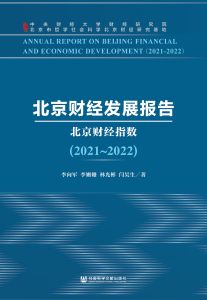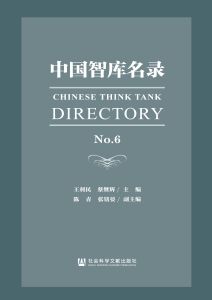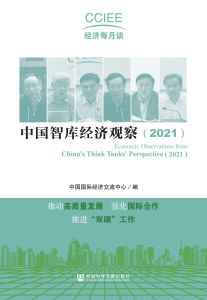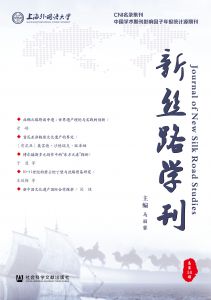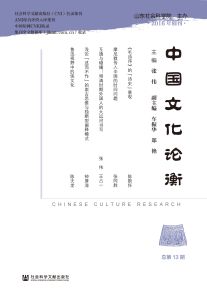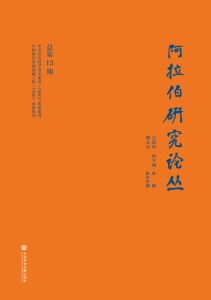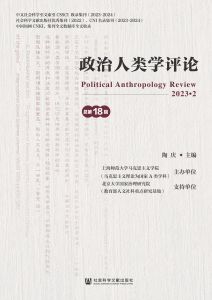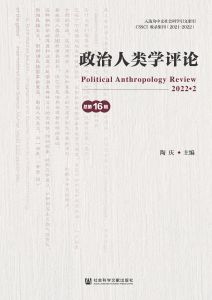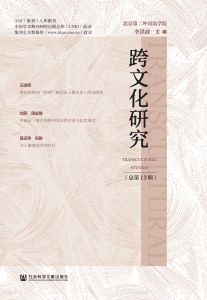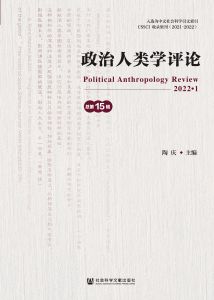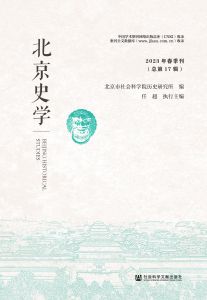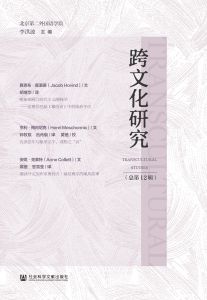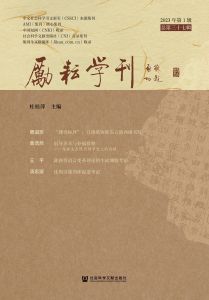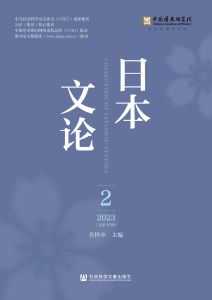首页 >
图书详情
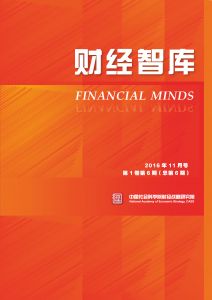
图书简介
目录
参考文献
音频
视频
2016 年1 月创刊,由中国社会科学院主管、中国社会科学院财经战略研究院主办,系国内首本经济领域智库期刊。《财经智库》秉承“学以致用、研以致用”的学风,以我国重大现实财经问题为研究对象,立足国家级综合性高端智库定位,反映围绕财经领域重大现实问题的国情调研和决策咨询成果, 服务党和国家的经济决策;重视思想性、原创性、现实性、战略性,以定性研究为主,倡导研究成果的决策影响力和社会影响力。
[展开]
-
烟草税:理论、制度设计与政策实践
-
一、理论:为什么要对烟草课以重税?
-
二、制度设计:全球视角
-
三、政策实践:全球经验与中国实践
-
四、结论
-
-
中国缩小差距的政策建议
-
一、背景
-
二、成就
-
三、挑战
-
四、政策建议
-
-
中国在全球舞台的崛起
-
一、背景
-
二、成就
-
三、挑战
-
四、政策建议
-
-
引入“熔断机制”,打造科学的现代财政制度
-
一、财政“熔断机制”文献研究
-
二、“内在稳定器”是我国现代财政制度的“标配”
-
三、美国财产税中的“熔断机制”
-
四、税收管理引入“熔断机制”具有稳定税负、平稳税改、改善征纳关系等“一石多鸟”的功效
-
五、“熔断机制”与中期财政规划可以有效结合使用
-
六、小结
-
-
浙江省广义税负水平和结构的宏微观分析及政策建议
-
一、浙江省宏观税负水平和结构分析
-
二、浙江企业的微观税负考察
-
三、进一步优化浙江省税负水平和结构的建议
-
四、总结
-
-
政府“隐形之手”、债务展期与债务违约
-
一、引言
-
二、我国企业信用债问题的一个逻辑悖论:刚性兑付下的债务展期与不断下降的债务效率
-
三、刚性兑付、债务展期与债务违约之间关系和内在机理:一个基于博弈论的分析框架
-
四、刚性兑付下的不良债务展期可能引发的风险
-
五、债务出清与信用资源优化配置的路径选择——基于分析框架的政策内涵
-
六、结语
-
[1][1]国家烟草专卖局:《关于加快培育全国性重点骨干品牌的指导意见》(国烟运[2009]175号),2009年5月22日。
[2][2]杨功焕、胡鞍钢:《控烟与中国未来:中外专家中国烟草使用与烟草控制联合评估报告》,经济日报出版社,2010年。
[3][3]杨功焕:《2010全球成人烟草调查中国报告》,中国三峡出版社,2011年。
[4][4]郑榕、高松、胡德伟:《烟草税与烟草控制——全球经验与在中国的运用》,《财贸经济》,2013年第3期。
[5][5]Campaign for Tobacco-Free Kids,and American Cancer Society. Tobacco Tax Success Story: South Africa,2012(http://www.fctc.org/images/stories/success_SoAfrica_en.pdf).
[6][6]Campaign for Tobacco-Free Kids. Tobacco Tax Success Story: United States of America,2012(http://www.fctc.org/images/stories/success_USA_en.pdf).
[7][7]Campaign for Tobacco-Free Kids,and American Cancer Society. Tobacco Tax Success Story: Ukraine,2012(http://www.fctc.org/images/stories/success_Ukraine_en.pdf).
[8][8]Campaign for Tobacco-Free Kids,and Action on Smoking & Health. Tobacco Tax Success Story: United Kingdom,2012(http://global.tobaccofreekids.org/files/pdfs/en/success_UK_en.pdf).
[9][9]Campaign for Tobacco-Free Kids. Tobacco Tax Success Story: Turkey,2012(http://www.fctc.org/images/stories/success_Turkey_en.pdf).
[10][10]Campaign for Tobacco-Free Kids,and National Institute of Public Health,Mexico. Tobacco tax success story: Mexico,2012(http://www.fctc.org/images/stories/success_Mexico_en.pdf)
[11][11]Department of Health-Republic of the Philippines,,2016.
[12][12]Hill,C.,Cancer Prevention and Screening,,100(6): 547–54,June 2013.
[13][13]International Agency for Research on Cancer(IARC),Effectiveness of Price and Tax Policies for Control of Tobacco,in ,Volume 14. Lyon,France: International Agency for Research on Cancer. 2011.
[14][14]Jha,P.,and F. J.Chaloupka,Curbing the Epidemic:Governments and the Economics of Tobacco Control,World Bank Publications,1999.
[15][15]Jha,P.,and R.Peto,Global Effects of Smoking,of Quitting,and of Taxing Tobacco,,370(1): 60–8.2014 Jan 2;doi: http://dx.doi.org/10.1056/NEJMra1308383 PMID: 24382066.
[16][16]Mackay,J.,M.P. Eriksen,and O. Shafey,,2nd Edition. Atlanta: American Cancer Society,2006.
[17][17]Moore,M.J.,Death and Tobacco Taxes,,27(2): 415–28,1996.
[18][18]Peto,R.,and A.D.Lopez,Future Worldwide Health Effects of Current Smoking Patterns,in Koop,C. Everett,C. E. Pearson,M. Rory Schwarz(eds.),,pp.154–161,New York: Jossey-Bass,2001.
[19][19]Smith,Adam,An Inquiry into the Nature and Causes of The Wealth of Nations,Book V,Chapter III,pp.474–476,1776;edited by Edwin Canaan,1976.
[20][20]The ,Tobacco and Tolerance,,20 December,pp. 59–61,1997.
[21][21]United Nations,,New York: United Nations,2015b.
[22][22]United Nations,,New York: United Nations,2015a.
[23][23]Vathesatogkit,P.,Benefits that Thailand Tobacco Control Law and Program Bring to the Country,,WHO: 1996–2002,2008.
[24][24]WHO report on the global tobacco epidemic,2015: raising taxes on tobacco. Geneva: World Health Organization;2015.
[25][25]World Economic Forum and Harvard School of Public Health,The Global Economic Burden of Non-Communicable Diseases,Geneva: World Economic Forum;2011.
[26][26]World Health Organization,,,Geneva: World Health Organization;2015.
[27][27]World Health Organization,,Geneva: World Health Organization,2013.
[28][28]World Health Organization,,Geneva: WHO;2011(a).
[29][29]World Health Organization,Health in 2015: from MDGs,Millennium Development Goals to SDGs,. Geneva: World Health Organization,2015.
[30][30]World Health Organization,,,Geneva: World Health Organization;2011(b).
[31][31]Yang,L.,H.Y.Sung,Z.Z.Mao,T.W. Hu,and K.Rao,Economic Costs Attributable to Smoking in China: Update and an 8-year Comparison,2000–2008,,20:266 –272,2011.
[32][32]Yürekli,A.,Z. Önder,M.Elibol,N.Erk,A.Cabuk,M.Fisunoglu,S.F. Erk,and F.J.Chaloupka,,Paris:International Union Against Tuberculosis and Lung Disease,2010.
[33][33]国家统计局:《中国统计年鉴2014》,中国统计出版社,2014年。
[34][34]Alms,James and Yongzheng Liu,China's Tax-for-Fee Reform and Village Inequality,,42(1):38-64,2014.
[35][35]Appleton,Simon,Lina Son and Qingjie Xia,Understanding Urban Wage Inequality in China 1988–2008: Evidence from Quantile Analysis,,62:1-13,2014.
[36][36]Bulman,David,Maya Eden and Ha Nguyen,Transitioning from Low-Income Growth to High-Income Growth: Is There a Middle Income Trap?,, 7104,2014.
[37][37]Cai,F.,J. Giles,P. O'Keefe and D. Wang,The elderly and old age support in rural China,,2012.
[38][38]Chen,Jiandong,Fuqian Fang,Wenxuan Hou,Fengying Li,Ming Pu,and Malin Song,Chinese Gini Coefficient from 2005 to 2012,Based on 20 Grouped Income Data Sets of Urban and Rural Residents,,Volume 2015.
[39][39]Chi,Wei,Bo Li and Qiumei Yu,Decomposition of the Increase in Earnings Inequality in Urban China: A Distributional Approach,,22:299-312,2011.
[40][40]Ding,Sai,Xiao-yuan Dong and Shi Li,Women's Employment and Family Income Inequality During China's Economic Transition,,15(3):163-190,2009.
[41][41]Dollar,Davis and Bert Hofman,Intergovernmental Fiscal Reforms,Expenditure Assignment and Governance,http://siteresources.worldbank.org/PSGLP/Resources/intergovernmental.pdf,2006.
[42][42]Hering,Laura and Sandra Poncet,Income Per Capita Inequality in China: The Role of Economic Geography and Spatial Interactions,,33(5):655-679,2011.
[43][43]Jacka,Tamara,Migration,Householding and the Well-being of the Left-Behind Women in Rural Ningxia,,67:1-22,2012.
[44][44]Jin,Hailong,Hang Qian,Tong Wang,and Kwan Choi,Income Distribution in Urban China: An Overlooked Data Inconsistency Issue,,30:383-396,2014.
[45][45]Khan,Azizur Rahman and Carl Riskin,Growth and Distribution of Household Income in China between 1995 and 2002,in B. Gustafsson et al.(eds),ch.3.,2007.
[46][46]Li,S.,C. Luo and T. Sicular,Overview: Income Inequality and Poverty in China,2002-2007,2011.
[47][47]Li,Chao and John Gibson,Spatial Price Differences and Inequality in the People's Republic of China: Housing Market Evidence,,31(1):92–120,2014.
[48][48]Liu,H,Economic Reforms and Gender Inequality in Urban China,,59(4):839-876,2011.
[49][49]Park,Albert and Fang Cai,2011,The Informalization of the Chinese Labor Market,in SaroshKuruvilla,Mary Gallagher,and Ching-kwanLee(eds.),,,Cornell University Press,2011.
[50][50]Qu,Bo,Subject and Subject: English Teaching and Learning in China,,14(3),2007.
[51][51]Rozelle,Scott and Linxiu Zhang,Economic Development and China's Educational Challenges The Need for Human Capital Development and How to Promote It,Power point presentation,2010.
[52][52]Rozelle,Scott,China's Human Capital Challenge and Investments in Education,Nutrition and Health,Background Paper for ,Beijing,2011.
[53][53]Song,Yang,Rising Chinese Regional Income Inequality: The Role of Fiscal Decentralization,,27:294-309,2013.
[54][54]Wang,H.,J.E.Tong,F.B. Su,G.X.,Wei,R.Tao,To Reallocate or Not: Reconsidering the Dilemma in China's Agricultural Land Tenure Policy,,28(4):805-814,2011.
[55][55]Wang,C,G. Wan and D. Yang,Income Inequality in the People's Republic of China: Trends,Determinants and Proposed Remedies,J,28(4):686-708,2014.
[56][56]World Bank and the Development Research Center of the State Council,P. R. China,China 2030: Building a Modern,Harmonious and Creative Society,Washington,DC: World Bank,2013.
[57][57]Xie,Yu and X. Zhou,Income Inequality in today's China,(),111 (19),2014.
[58][58]Xue,Jinjun,Chuliang Luo and Shi Li,Globalization,Liberalization and Income Inequality: The Case of China,,59(1),2014.
[59][59]Xue,Jinjun,WenshuGao,and Lin Guo,Informal Employment and Its Effect on the Income Distribution in Urban China,,31:84-93,2014.
[60][60]Yang,Juan,Terry Sicular and Desheng Lai,The Changing Determinants of High School Attainment in Rural China,C,20(4):551-566,2014.
[61][61]Zhua,Nong and Xubei Luo,The Impact of Migration on Rural Poverty and Inequality: a Case Study in China,,41:191-204,2010.
[62][62]Zhao,R. and S. Ding,The Distribution of Wealth in China,in B. Gustafsson,S. Li,and T. Sicular(Eds.),,pp.118-144,New York,NY: Cambridge University Press,2008.
[63][63]Ahuja,A. and M. Nabar,Investment-Led Growth in China:Global Spillovers, WP/12/267,2012.
[64][64]Bloom,Nicholas,MirkoDraca and John Van Reenen,Trade Induced Technical Change? The Impact of Chinese Imports on Diffusion,Innovation and Productivity,Unpublished,2011.
[65][65]Bayoumi,Tamim and Franziska Ohnsorge,Do Inflows or Outflows Dominate? Global Implications of Capital Account Liberalization in China, No.13/189,2013.
[66][66]China Foreign Aid White Paper,2011.
[67][67]China Foreign Aid White Paper,2014.
[68][68]Dollar,David,United States-China Two-way Direct Investment: Opportunities and Challenges,,2015.
[69][69]Fernald,John G.,Eric Hsu and Mark M. Spiegel,Has China's economy become more“standard”?,,2014.
[70][70]Gauvin,L. and C. Rebillard,Towards Recoupling? Assessing the Impact of a Chinese Hard Landing on Commodity Exporters: Results from Conditional Forecast in a GVAR Model,Mimeo,the 9th CERDI-IDREC International Conference on the Chinese Economy,2013.
[71][71]Gruss,Bertrand,After the Boom-Commodity Prices and Economic Growth in Latin America and the Caribbean, No. 14/154,2014.
[72][72]Hanson,G.H.,The Rise of Middle Kingdoms:Emerging Economies in Global Trade,J 26(2):41–63,2012.
[73][73]Hooley,J.,Bringing down the Great Wall? Global Implications of Capital Account Liberalization in China,,Bank of England,2013.
[74][74]Houssa,Romain,Jolan Mohimont and Christopher Otrok,The Sources of Business Cycles in a Low Income Country, No. 15/40,2015.
[75][75]Huang,H.,The Development of the RMB Offshore Market and the Liberalization of China's Capital Account,International Economics Department,Project summary,Chatham House,The Royal Institute of Inernational Affairs,2015.
[76][76]International Monetary Fund,2014 Spillover Report,,2014.
[77][77]Irwin,Amos and Kevin Gallagher,Exporting National Champions: China's OFDI Finance in Comparative Perspective,,Boston University,2014.
[78][78]Kitano,Naohiro and Yukinori Harada,Estimating China's Foreign Aid 2001-2013, No. 78.,Comparative Study on Development Cooperation Strategies: Focusing on G20 Emerging Economies,June 2014.
[79][79]Koopman,Robert,Zhi Wang and Shang-Jin Wei,Tracing Value added and Double Counting in Gross Exports,,104(2):459-94,2014.
[80][80]Pigato,Miria and Wenxia Tang,China and Africa: Expanding Economic Ties in an Evolving Global Context. Background Paper for the “Investing in Africa”Forum,Addis Ababa(June 30-July 1,2015),2015.
[81][81]SCIO(State Council Information Office),China's Foreign Aid,China News,www.chinanews.com/gn/2011/04–21/2989430.shtml,2011.
[82][82]SCIO(State Council Information Office),China's Foreign Aid,Xinhuanet,http://news.xinhuanet.com/english/china/2014-07/10/c_133474011.htm,July 2014
[83][83]Standard Chartered,China-Total debt breaks 250% of GDP,,2014.
[84][84]World Bank,Shifting Priorities,Building for the Future,,2014.
[85][85]World Bank and DRC(Development Research Center of the State Council,the People's Republic of China),,. Washington,DC: World Bank,2014.
[86][86]World Bank,Global Economic Prospects: Having Fiscal Space and Using It,Washington DC:World Bank,Box 2.4“How resilient is Sub-Saharan Africa?”,pp. 110-113,2015a.
[87][87]World Bank,Global Economic Prospects: the Global Economy in Transition,Washington DC:World Bank,2015b.
[88][88]约翰·L.米克塞尔:《公共财政管理——分析与应用》(第六版),白彦锋、马蔡琛译,中国人民大学出版社,2005年。
[89][89]Bowman,John H,Property Tax Circuit Breakers Reconsidered,,39(4):355-372,1980.
[90][90]Harris,William T.,Property Tax Circuit-breakers: Good Causes but Bad Economics,,42(2):209-216,1983.
[91][91]Lockner,A.O. and J.K. Han,Circuit-Breakers on Farm-Property-Tax Overload: A Case Study,,26(2):233-240,1973.
[92][92]Micah,Lemons,Circuit Breakers: Implementing a Property Tax Credit to Help Low-Income Households,,19(1):111-134,2012.
[93][93]Michael,Allen and Woodbury Richard,Containing the Individual Burden of Property Taxes: A Case Study of Circuit Breaker Expansion in Maine,,59(3):665-683,2006.
[94][94]Mitchell,William E,Equity Effects of Property Tax Relief for the Aged: The Circuit-Breaker Legislation,,32(4):367-378,1973.
[95][95]Patrick,Barkey,State's “Circuit Breaker”Law Worsens Flawed Tax System,,27(18),2006.
[96][96]Richard,Barrows and Bonderud Kendra,The Distribution of Tax Relief under Farm Circuit-Breakers: Some Empirical Evidence,,64(1):15-27,1988.
[97][97]Sumit,Agarwal and McGranahan Leslie,Spending responses to state sales tax holidays,,2012.
[98][98]CEIC中国经济数据库:http://www.ceicdata.com/zh-hans/countries/china。
[99][99]国家税务总局:《中国税务年鉴》(2015年),中国税务出版社,2015年。
[100][100]国家统计局:《中国统计年鉴》(2015年),中国统计出版社,2015年。
[101][101]安体富、岳树民:《我国宏观税负水平的分析判断及其调整》,《经济研究》,1999年第3期。
[102][102]高培勇:《中国税收持续高速增长之谜》,《经济研究》,2006年第12期。
[103][103]吕冰洋、郭庆旺:《中国税收高速增长的源泉:税收能力和税收努力框架下的解释》,《中国社会科学》,2011年第2期。
[104][104]汪德华、李琼:《宏观税负与企业税负地区间差异之比较——基于工业企业数据计量分解的分析》,《财贸经济》,2015年第3期。
[105][105]吴联生:《国有股权、税收优惠与公司税负》,《经济研究》,2009年第10期。
[106][106]西南财经大学中国家庭金融调查与研究中心:《小微企业税收政策研究报告》,2016年。
[107][107]周黎安、刘冲、厉行:《税收努力、征税机构与税收增长之谜》,《经济学(季刊)》,2011年第11卷第1期。
[108][108]冯涛、王永明、宋艳伟:《地方社会稳定、地方政府干预与信贷资源配置》,《西安交通大学学报(社会科学版)》,2010年第6期。
[109][109]华秀萍:“制度逻辑影响民间投资断崖下跌”,金融时报中文网,2016年6月28日,http://next.ftchinese.com/story/001068197?full=y。
[110][110]李华民、吴非:《谁在为小微企业融资:一个经济解释》,《财贸经济》,2015年第5期。
[111][111]刘海明、曹廷求:《宏观经济不确定性、政府干预与信贷资源配置》,《经济管理》,2015年第6期。
[112][112]刘鹤(主编):《两次全球大危机的比较研究》,中国经济出版社,2013年。
[113][113]聂新伟:《宏观脆弱渐进下的经济解释与政策走向》,《现代经济探讨》,2015年第12期。
[114][114]聂新伟:《政府信用、地方政府债务风险与信用指标体系构建的思路》,《财政研究》,2016年第3期。
[115][115]彭文生:《渐行渐远的红利——寻找中国新平衡》,社会科学文献出版社,2013年。
[116][116]杨东:《互联网金融的法律规制——基于信息工具的视角》,《中国社会科学》,2015年第4期。
[117][117]张杰:《国有银行不良资产为什么特殊——兼评相关文献》,《金融评论》,2015年第6期。
[118][118]张维迎:《企业理论与中国企业改革》,上海人民出版社,2015年。
[119][119]格·卡普里奥、詹·A. 汉森、帕·郝诺汉:《金融自由化的利弊》,《经济社会体制比较》,2002年第3期。
[120][120]青木昌彦、瑟达尔·丁克:《关系型融资制度及其在竞争中的可行性》,《经济社会体制比较》,1997年第6期。
[121][121]约瑟夫·斯蒂格利茨:《金融稳健与亚洲的可持续发展》,《经济社会体制比较》,1998年第3期。
[122][122]尼尔·格雷戈里、斯托伊安·塔涅夫:《中国民营企业的融资问题》,《经济社会体制比较》,2001年第6期。
[123][123]Dziuda,W. and J. Mondria,Asymmetric Information,Portfolio Managers and Home Bias,,25:2109-2154,2012.
[124][124]Fisher,I.,,Martino Fine Books Reprint of 1930 Edition,2012.
[125][125]Hochberg,Y. and J. Rauh,Local Overweighting and Underperformance: Evidence form Limited Partner Private Equity Investments,,26:403-451,2013.
[126][126]Lerner,J.,A. Schoar and W. Wongsunwai,Smart Institutions,Foolish Choices: the Limited Partner Performance Puzzle,,62:731-764,2007.
[127][127]McKinnon,R. and H. Pill,Credit Liberalizations and International Capital Flows: The Over Borrowing Syndrome,in Tito and A. Krueger(eds.),,Chicago: University of Chicago Press,1996.
[展开]



